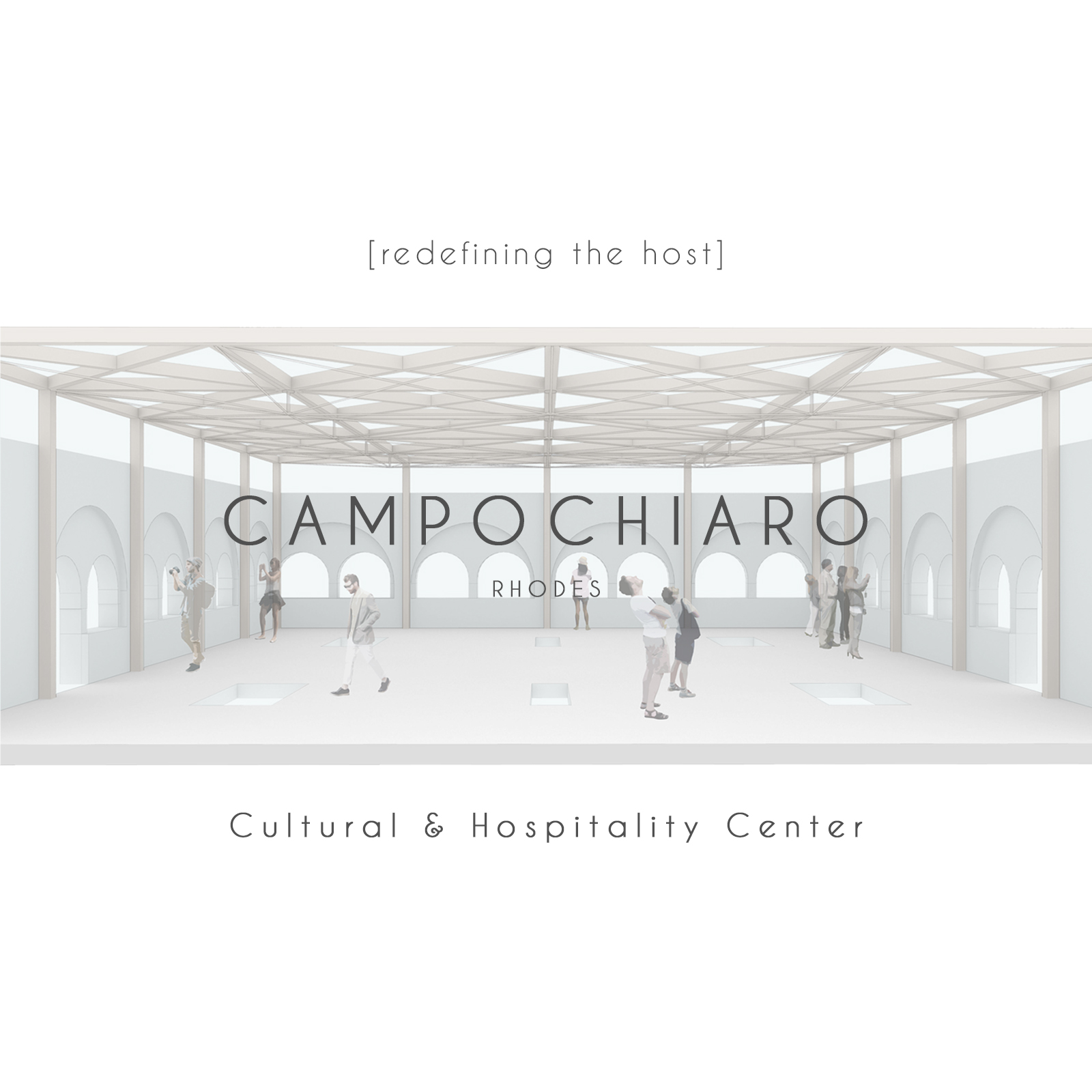The present diploma thesis is engaged in the reuse and rehabilitation of the central building complex of the Italian rural settlement Campochiaro (nowadays renamed as Eleousa) on the island of Rhodes in Greece. This forest settlement was founded in 1935, during the period of the Italian occupation in the Dodecanese (1912-1943) and was designed by the italian architects Petracco and Bernabitti. There were transported Italian lumberjacks settlers. The architecture of the buildings follows the rationalist standards of the period, with a mediterranean architectural vocabulary. The main building complex consists three multifunctional buildings (administration, school, police station, shops, restaurant, doctor’s office, apartments) and the church thus enclosing the rectangular square. Those buildings after the end of the Italian occupation functioned as sanatorium (1947-1970) and then as school and barracks. Today, only one part of building 3 and the church is in use and the rest is abandoned. All the square’s buildings have undergone alterations and degenerations, internally and externally, not all in the same level. The houses of the settlement are still inhabited by locals.
After studying the historical elements, the original Italian plans and recording of the current situation, it is proposing that the complex be operated as a Cultural & Hospitality Center. It will work as a core of alternative tourism activities, aiming the contact of the foreign with the local element and the interaction of cultures. Campochiaro attempts to redefine the concept of a tourist accommodation as a cultural product and to bring it to a experience for the visitor, linking it to its place, history and culture. This new Center will act as a core of alternative tourism activities, helping to the revitalizing of the wider region. The buildings will now house uses such as accommodation, restaurant, café, cinema, local products shops, library, memorial exhibition, event hall, traditional workshops and the existing forest protection service. The proposed rehabilitation study respects the original design by eliminating later additions that alter the typology and morphology of the buildings. The new manipulations are made behind the visible level of the square and they are wooden or mixed light constructions, distinct from the existing buildings. The new configuration aims to serve the diverse requirements of the proposed shared multifunctional space, ensuring its adaptability to future uses. About the outdoor, the square is redesigned and behind the building 3, a playground and a fitness park is planned. In the building 2 a roof of wooden net and glass offers a multifuction space that works all time. New additions are the wooden cabins, in contact with the building 1 that houses the guest rooms, offering a private, different, accommodation experience overlooking the forest.


![[redefining the host]
C A M P O C H I A R O RHODES
Cultural & hospitality centre](/admin/ftp/objects/181130024616.jpg)
![[redefining the host]
C A M P O C H I A R O RHODES
Cultural & hospitality centre](/admin/ftp/objects/181130024631.jpg)
![[redefining the host]
C A M P O C H I A R O RHODES
Cultural & hospitality centre](/admin/ftp/objects/181130024649.jpg)
![[redefining the host]
C A M P O C H I A R O RHODES
Cultural & hospitality centre](/admin/ftp/objects/181130024703.jpg)
![[redefining the host]
C A M P O C H I A R O RHODES
Cultural & hospitality centre](/admin/ftp/objects/181130024735.jpg)
![[redefining the host]
C A M P O C H I A R O RHODES
Cultural & hospitality centre](/admin/ftp/objects/181130024758.jpg)
![[redefining the host]
C A M P O C H I A R O RHODES
Cultural & hospitality centre](/admin/ftp/objects/181130024816.jpg)
![[redefining the host]
C A M P O C H I A R O RHODES
Cultural & hospitality centre](/admin/ftp/objects/181130024835.jpg)
![[redefining the host]
C A M P O C H I A R O RHODES
Cultural & hospitality centre](/admin/ftp/objects/181130024912.jpg)
![[redefining the host]
C A M P O C H I A R O RHODES
Cultural & hospitality centre](/admin/ftp/objects/181130024934.jpg)
![[redefining the host]
C A M P O C H I A R O RHODES
Cultural & hospitality centre](/admin/ftp/objects/181130025004.jpg)
![[redefining the host]
C A M P O C H I A R O RHODES
Cultural & hospitality centre](/admin/ftp/objects/181130025017.jpg)
![[redefining the host]
C A M P O C H I A R O RHODES
Cultural & hospitality centre](/admin/ftp/objects/181130025029.jpg)
![[redefining the host]
C A M P O C H I A R O RHODES
Cultural & hospitality centre](/admin/ftp/objects/181130025045.jpg)
